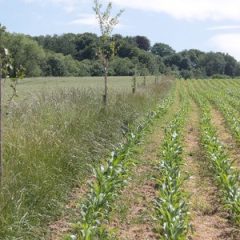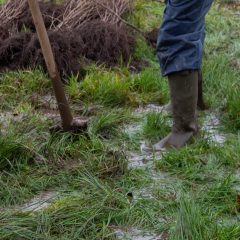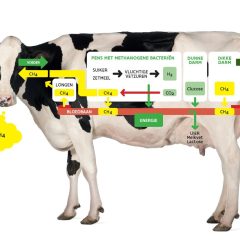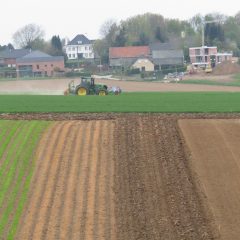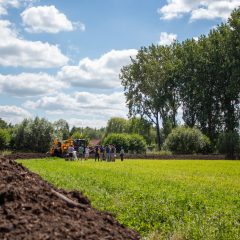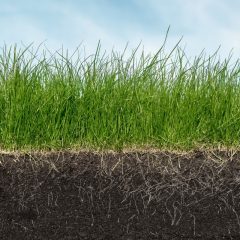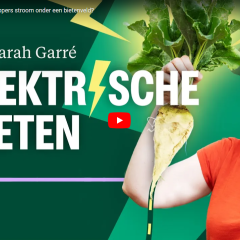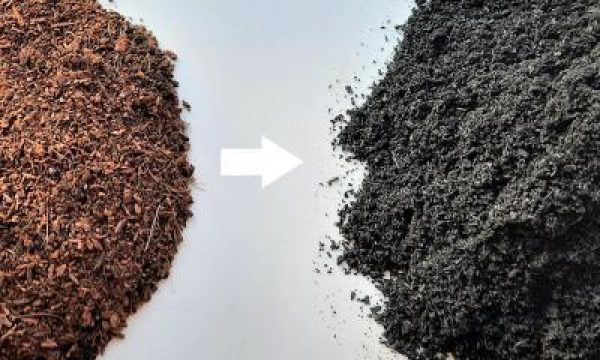Dossier Soil: carbon sequestration
Besides the ocean, soils are the largest carbon storehouse. With proper management, agricultural soils can even store significantly more carbon than they currently do. Capturing CO2 in the form of soil organic matter (carbon) not only contributes to the fight against climate change, this carbon also plays a key role in the proper functioning and fertility of the soil. Yet carbon sequestration in agricultural soils is not simple to do.
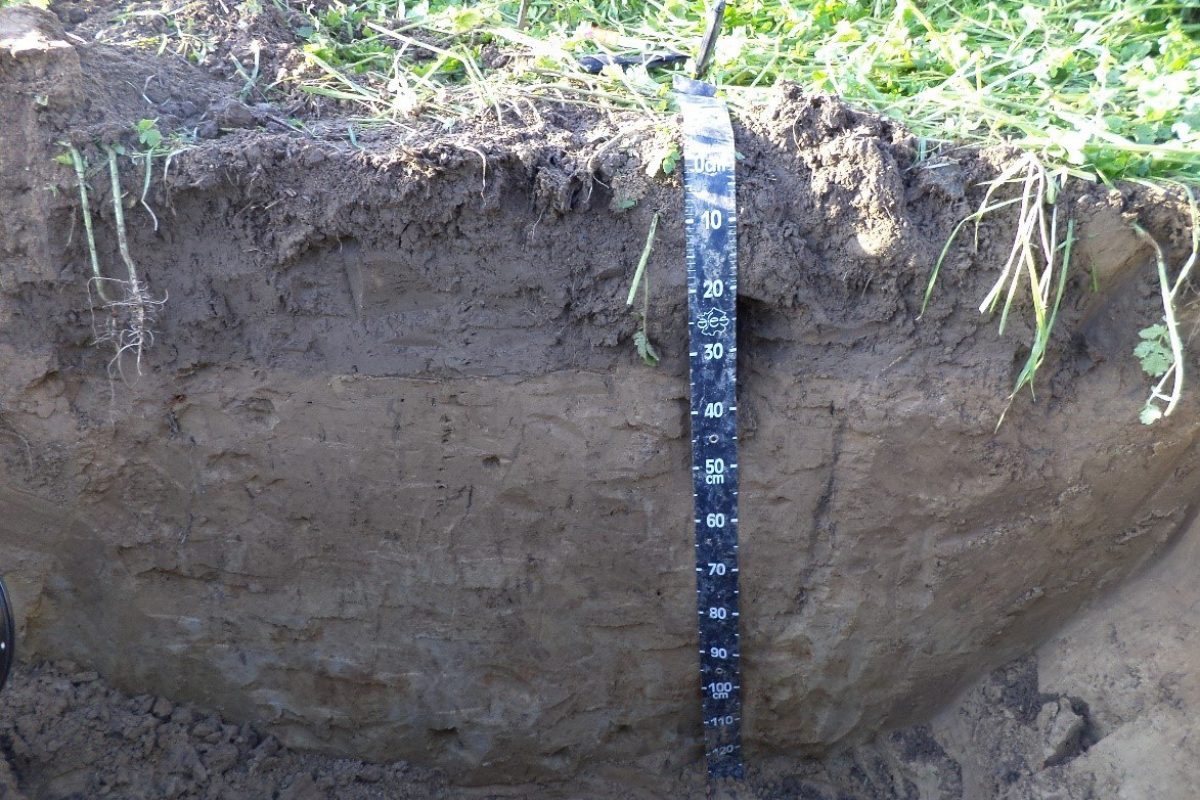
What does ILVO do?
-
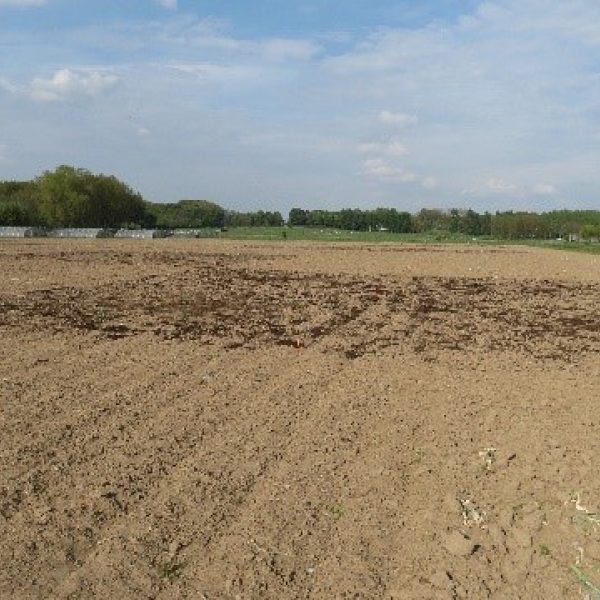 Using field trials, ILVO is investigating the carbon contribution of crops, fertilization, soil amendments, and tillage
Using field trials, ILVO is investigating the carbon contribution of crops, fertilization, soil amendments, and tillage -
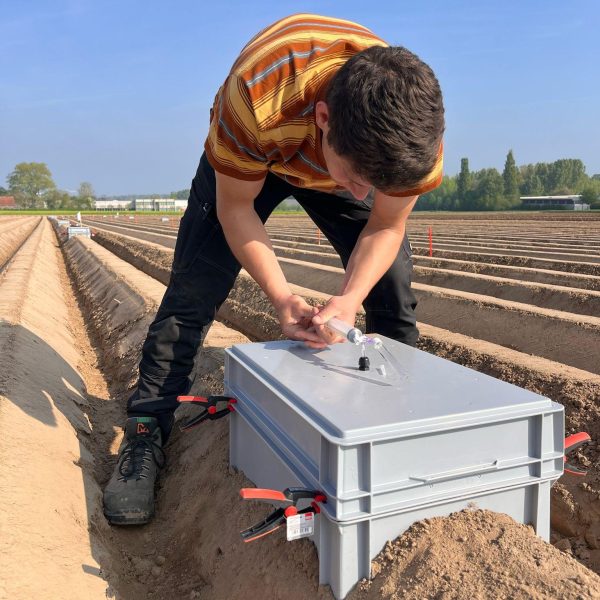 ILVO examines potentially negative effects of carbon storage practices, e.g. nitrous oxide emissions, nitrate leaching or ammonia emissions.
ILVO examines potentially negative effects of carbon storage practices, e.g. nitrous oxide emissions, nitrate leaching or ammonia emissions. -
 ILVO samples and analyzes cropland and grassland soils in the Flemish carbon monitoring network Cmon.
ILVO samples and analyzes cropland and grassland soils in the Flemish carbon monitoring network Cmon. -
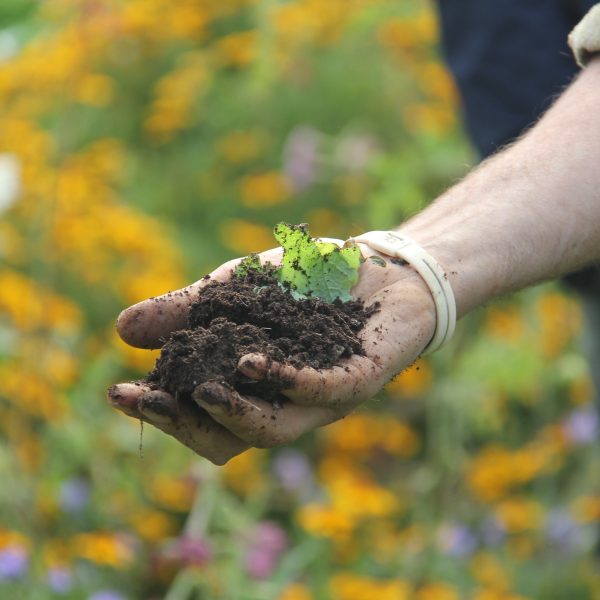 ILVO is investigating how farmers can be compensated for carbon accumulation and how this can be monitored in a cost-effective way.
ILVO is investigating how farmers can be compensated for carbon accumulation and how this can be monitored in a cost-effective way.
1: What is carbon sequestration?
From CO2 to soil organic carbon
Plants need CO2 to grow. Through photosynthesis they convert it into glucose and into oxygen. Part of the carbon (C) they extract from the atmosphere in this way ends up in the soil directly via the roots, via substances secreted by roots (exudates), via crop residues left behind on the field or indirectly via external organic material such as animal manure, compost, wood chips, etc. Through soil life, this fresh organic material is converted partly into nutrients for the plants (mineralization) and partly into stable 'soil organic carbon' (humification). The fraction of carbon that remains is not the same for all organic materials but depends on the quality of the applied material ('effective organic carbon').
Carbon balance
The stable carbon, in turn, is subject to decomposition (estimated on average at 2% per year). Part of this benefits the plant in the form of nutrients and part is lost in the form of CO2. The amount of organic matter degraded annually depends on several factors. Carbon storage can only occur if more carbon is supplied than is decomposed. In this way, the soil can act as a "carbon sponge" and thus a buffer against climate change. After all, sequestration of 1 ton of stable carbon in the soil removes 3.7 tons of CO2 from the air.
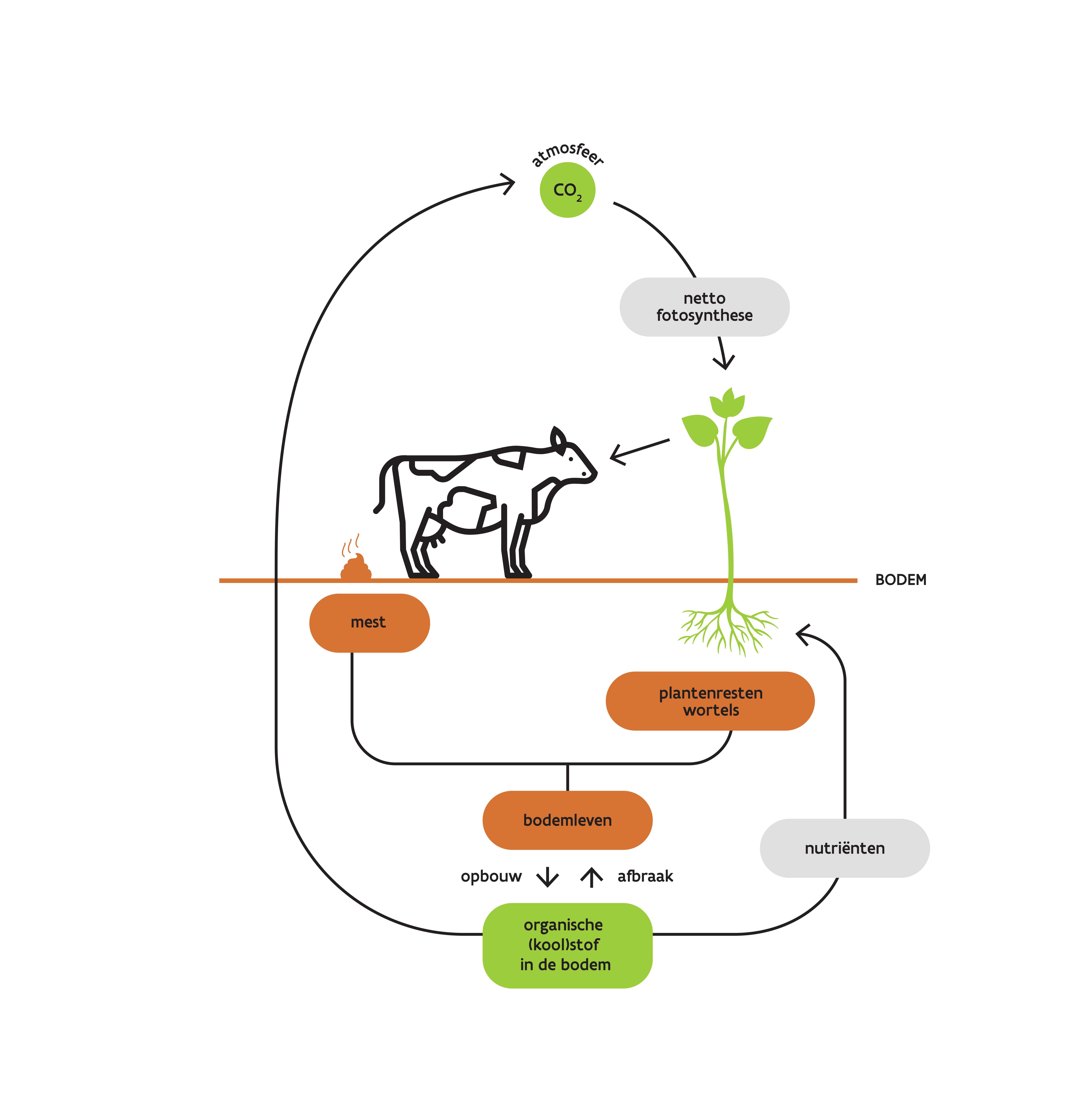
The importance of terminology
When discussing carbon build-up in soils as a result of specific management practices, it is important to distinguish between reducing carbon losses and actually sequestering additional carbon from the atmosphere. Many studies compare the effects of a particular measure to a control situation in which that measure is not applied. If such studies show that the carbon stock increases by, say, x tons C per hectare per year, this means that the measure leads to a higher carbon stock compared to the control situation. However, this does not necessarily imply a net removal of CO₂ from the atmosphere. In situations where soils lose carbon without this measure, application of the measure may reduce the loss without sequestering additional carbon. Therefore, when we compare the impact of a measure to a control situation, we use the term "carbon accumulation" instead of "carbon sequestration. We use the latter term for an actual increase in soil carbon stocks, which is associated with carbon removal from the atmosphere.
2. Why sequester carbon in agricultural soils?
A soil rich in soil organic matter is not only good for the climate, but also for the farmer. After all, a soil that contains sufficient carbon will generally have:
- Better soil structure and consequently greater resistance to sloughing, compaction and erosion
- Increased permeability resulting in reduced runoff, reduced risk of flooding and improved surface and groundwater recharge
- A higher water holding capacity that leaves more water available to the plant during the growing season which can prove crucial during periods of drought
- Improved soil fertility. Organic matter acts as a buffer against pH fluctuations, acts as a source of nutrients through mineralization and improves nutrient retention
- A more extensive and active soil food web which in turn contributes to improved soil structure, fertility, biodiversity and disease resistance
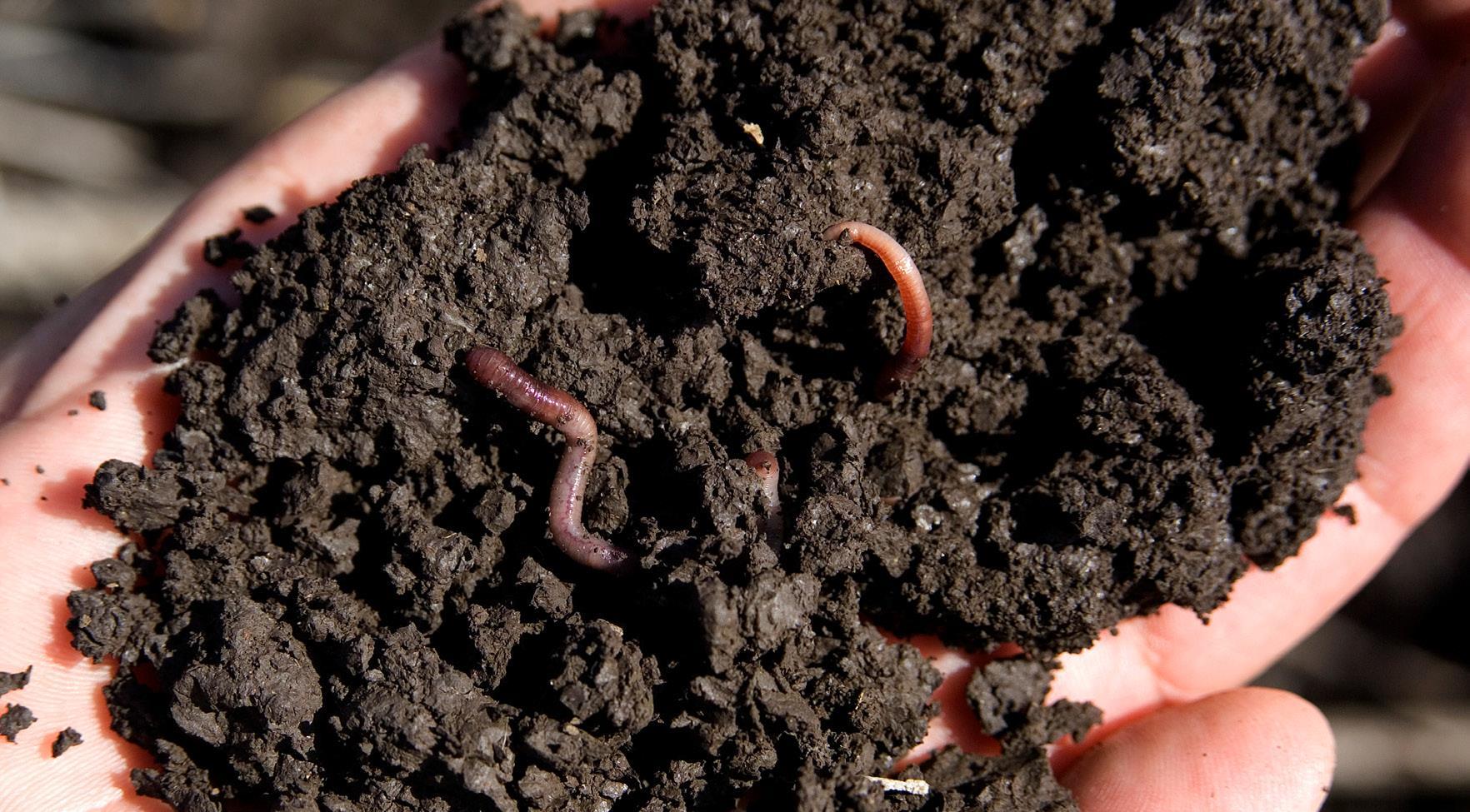
In other words, soil rich in soil organic matter is better protected against the effects of climate change and will generate more stable crop yields, even in difficult conditions. Carbon storage is thus not only an important mitigation measure1 but also plays its role in climate adaptation2.
1Reducing the impact of agriculture on the climate (mitigation)
2Adaptations in agriculture to the already present effects of climate change
3. How to sequester carbon in the soil
Storing carbon in soil is a slow and gradual process. It requires sustained effort, because once carbon-promoting practices are discontinued, soil carbon levels can rapidly decline. Organic material then decomposes back into CO2, which escapes to the atmosphere. Below we describe various soil management measures that contribute to carbon accumulation, and the challenges involved.
Various management measures can be used to increase the carbon stock under agricultural soils. This applies to both grassland and arable land.
3.1 Crop choice and management
Green cover crops (catch crops)
Green cover crops or catch crops are crops that are sown after the main crop or even already during cultivation (under-sowing), with the aim of keeping the soil covered with living crops for as long as possible. This extends the period during which living plants in the field actively absorb CO2 through photosynthesis. That extended growing period produces more biomass, which is eventually incorporated and thus enters the soil as organic matter. The earlier these plants are sown, the greater the effect. Green cover crops also provide additional root mass in the soil, which also contributes to carbon accumulation. At the same time, they help prevent erosion and limit nutrient losses outside the growing season - hence the term "catch crop".
Crop choice
Through a targeted crop choice and/or crop rotation, the supply of organic matter can be increased. Examples are perennial crops such as temporary grassland, deep-rooting crops such as alfalfa and red clover, and crops that leave a lot of structure-rich crop residues such as cereals. Within the group of crop residues, straw appears to have the greatest carbon storage potential. Increasing the proportion of straw left in the field after harvest can stimulate soil carbon accumulation but would immediately mean less straw is available for manure production. Also, the incorporation of straw remains an economic issue. For the farmer, the consideration of incorporation or sale is a choice between short term yield or a longer term investment in organic matter (soil quality).
Via een gerichte gewaskeuze en -rotatie kan de aanvoer van organisch materiaal structureel verhoogd worden. Enkele recente inzichten:
- Roots play a role: Research shows that carbon from roots and root exudates is up to three times more stable than carbon from above-ground residues. Deep-rooting crops can contribute to carbon accumulation below the building stock
- Leguminous forage crops: Through European long-term field experiments, it has been shown that leguminous crops grown as forage, with the entire aboveground biomass harvested, contribute to carbon accumulation. Examples include clover, alfalfa and vetch. The greater their proportion in the rotation, the greater the effect. Leguminous crops grown for seed, such as field bean or soybean, appear to be less effective.
- Cereal crops. Cereal crops have a longer growing period and root intensively, making them favorable for carbon build-up. This impact can be further enhanced by leaving straw residues on the field and working them in, rather than disposing of them. Viewed on a regional scale, the potential is less, however, because more straw in the field means less availability of straw for other uses, such as farmyard manure production. There is also an economic trade-off: incorporation of straw is a longer-term investment in soil quality, but lowers the immediate yield for the farmer. The potential of straw residues may still increase, however, if the proportion of cereals in the rotation was to increase.
3.2 Adding organic material
Regular application of organic fertilizers or soil conditioners is a logical method of increasing organic carbon content in a relatively short period of time. The increase in organic carbon content depends on the quality and stability of the organic matter applied. For example, both compost and farmyard manure possess higher carbon-building potential than, say, slurry. Indeed, both products are rich in stable organic matter and, if applied at the same (carbon) dose and in similar conditions (soil texture, climate, etc.), the carbon build-up in the soil is similar. However, applying more organic fertilizers or soil improvers is not always evident in Flanders because of strict fertilizer legislation.
Even compost and farmyard manure are rich in nutrients and their application, as with other organic forms of fertilizer, must be judicious in order to limit additional nitrogen and phosphorus leaching and avoid imbalances in the nutrient balance. In soils already rich in phosphorus, compost application may be a better choice than farmyard manure because compost application carries less risk of phosphate leaching than farmyard manure. So using compost is a good practice, especially when the materials used are locally available. With an annual application of 2 tons C per hectare per year via farm compost in the ILVO BOPACT long-term field trial, we see no increased risk of nitrate leaching after 15 years.
Biochar
Biochar is a charcoal-like product created by heating biomass under low-oxygen conditions. It breaks down very slowly in the soil and therefore offers potential for long-term carbon storage. However, a major challenge today is the availability of sufficient biomass, production capacity and cost. In this regard, ILVO points to the potential of cascading systems in which compost or biochar are first used in greenhouse farming, and only then in arable farming. In this way, biomass is optimally utilized and competition between sectors is avoided.
3.3 Land use and tillage
Tillage
In addition to the application of organic matter, how the soil is tilled is also important. Non-tillage is often cited as a measure to reduce carbon losses. However, much European research focuses only on the top layer of the soil (20 cm or even less), while studies that include deeper soil layers often show no or contradictory effects. D'Hose & Ruysschaert (2017) concluded, based on research conducted in our region, that non-tillage leads to redistribution of soil carbon, with higher concentrations in the top 10 cm of the soil profile while no significant increase in carbon stocks is found compared to plowing. This is confirmed by ILVO's BOPACT trial where after 13 years no differences in carbon stocks were found between non-tillage and plowing for depths 0-30 cm and 0-60 cm. The impact of reduced tillage, including no-till, depends on several factors such as depth of tillage, intensity of tillage (including seedbed preparation), combination with crops and crop residues, and pedo-climatic conditions.
Re-wetting
To make intensive agriculture possible, many peatlands were dewatered in the past, causing the peat to break down, resulting in high CO2 emissions. By raising the groundwater level again (rewetting), this degradation is greatly slowed or stopped. At the same time, this requires a different use of the land: conventional crops are no longer possible, but paludiculture - such as cattail, peat moss, duckweed, reed or willow - does offer opportunities. The harvested biomass from these systems can be further utilized, for example for composting. Although Flanders has relatively few areas with thick peat layers, measures such as humidification can locally make an important contribution to carbon conservation.
Agroforestry
Agroforestry - the combination of woody crops and field or forage crops in the same plot - not only stores carbon in trees and shrubs, but also increases soil carbon content. This is due in part to leaf fall and root growth and decomposition.
Flemish research shows that systems such as alley cropping (tree rows) on cropland and woody edges have a high potential for annual carbon accumulation. Smaller landscape elements such as hedgerows can also contribute, especially if the resulting wood chips are reused locally, either through composting or direct application to the soil.Grassland vs cropland
Impact of land use on carbon stocks
Croplands
Compost or farmyard manure?
Increasing the organic carbon content on arable land can be done in several ways. Regular application of organic matter (e.g. crop residues or organic fertilizer) is the most logical method to increase the organic carbon content in a relatively short period of time. The increase in organic carbon content depends on the quality and stability of the administered organic material. For example, both compost and farmyard manure possess a higher carbon storage potential than slurry for example. Indeed, both products are rich in stable organic matter and, if applied at the same (carbon) dose in similar conditions (soil texture, climate, etc.), the carbon build-up in the soil will be similar. It should be noted that compost and farmyard manure are rich in nutrients and that the application of compost and farmyard manure should be done judiciously to limit additional nitrogen and phosphorus leaching.
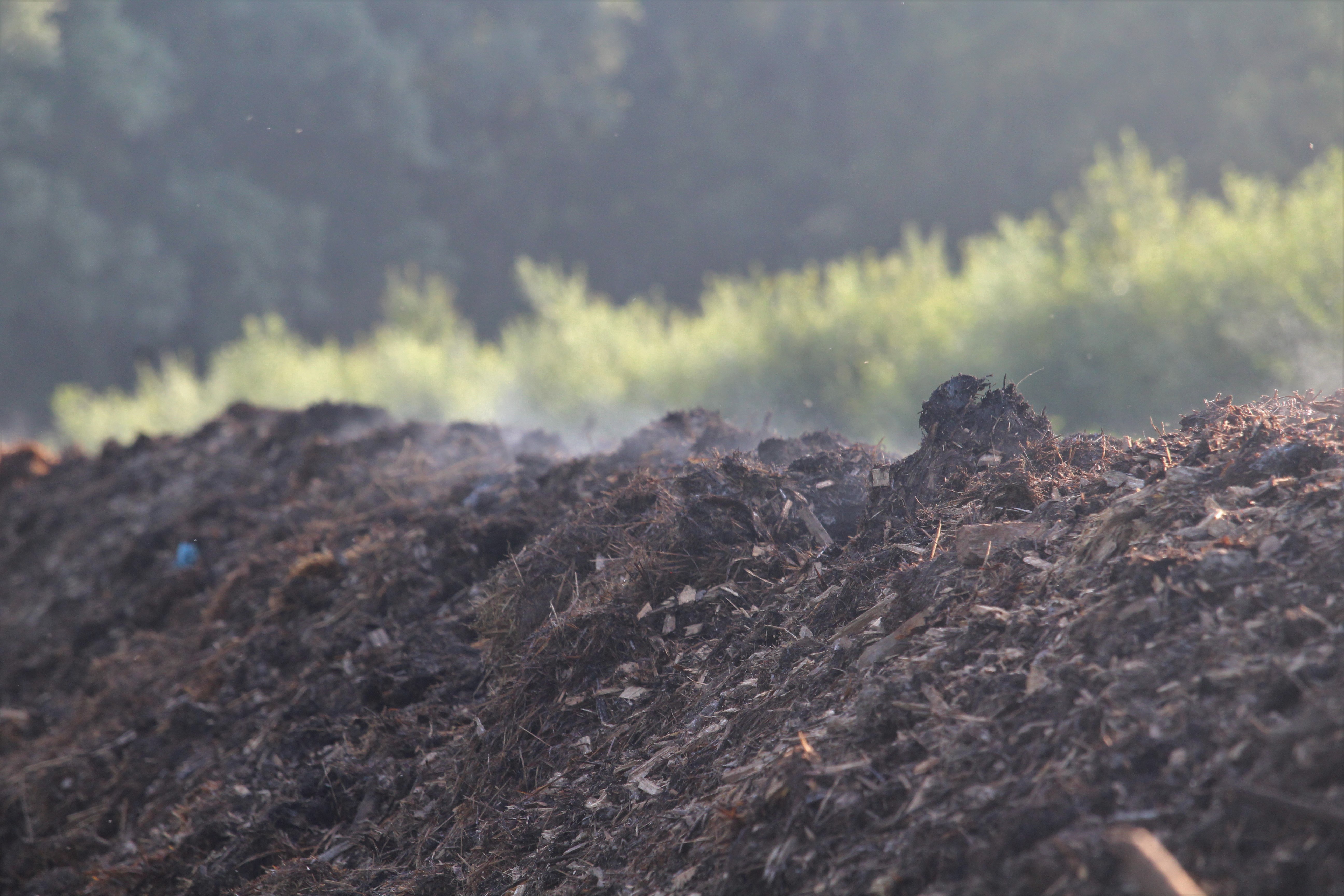
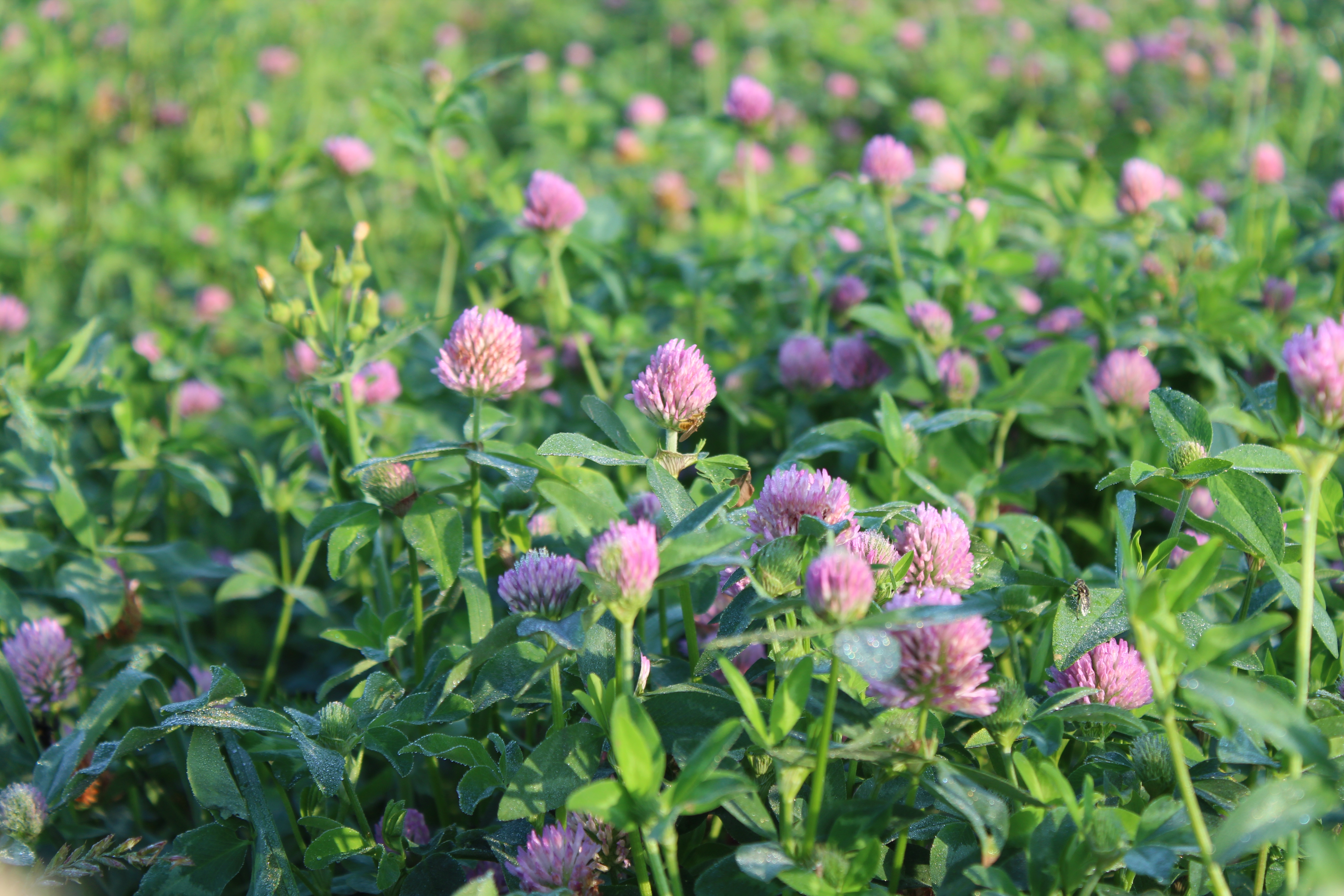
Tillage
In addition to adding fresh organic matter to the soil, less intensive tillage (e.g. no-till practices) of the soil is often put forward as a potential measure to increase soil carbon stock. However, several Flemish studies have shown that in our situation, the application of not-till usually results in a redistribution of carbon in the topsoil (0-30cm; more carbon in the 0-10cm) but not in higher carbon stocks in the soil (as compared to ploughing).
More info about how various farm management strategies affect the soil: KnowSoil
Agroforestry
Research in Flanders has shown that combining trees and/or shrubs with production crops on the same plot increases soil carbon content. Leaf fall, branch fall and root decomposition are put forward as the main explanations. Also wood edges and hedges at the edge of fields can contribute, especially if the wood chips from these small landscape elements are used, either as raw material in composting or by direct application in the soil.
More information about agroforestry

Rewetting
To make intensive agriculture possible many peat lands were drained in the past, causing the peat to break down, resulting in high CO2 emissions. By re-wetting these peat lands the decomposition is stopped and less CO2 will be emitted. An increased water level does require a different land use (wet cultivation or paludiculture). Crops that can be cultivated are, for example, bulrush, peat moss, duckweed, cranberries, reeds, willows and wild rice. Also this biomass harvested in these wetlands can potentially be used to sequester additional carbon, for example by using this biomass in the production of compost.
Part 3: the situation in Flanders
Monitoring the evolution in carbon stocks
Through the LULUCF (Land Use, Land use Change and Forestry ) regulation, the European Union wants to intervene in emissions induced by human activities and/or storage in carbon stocks. In doing so, it puts forward the "no-debit rule" for the period 2021-2030. Specifically, each member state must do everything possible so that existing carbon stocks are at least preserved at the end of that period. The figures currently used for LULUCF reporting to determine soil carbon (and its annual evolution) are based on historical trends and literature. These values do not sufficiently reflect reality. The figures need to be refined so that:
- the real storage/emission for a certain land-use category (e.g. cropland, grassland) is better reflected in the emission inventory (currently a fixed, historical factor is used). These figures should also allow for an accurate estimation of the carbon stocks in Flemish agricultural soils.
- the impact of modified soil management practices in agricultural soils and/or land use changes can be better estimated and better reflected in reporting.
In order to meet this objective, the Flemish Government aspires to start up a systematic monitoring of changes in organic carbon stocks in Flemish soils. To keep the start-up of a soil carbon monitoring network manageable and cost efficient, the present variability and number of sampling points that will be required to detect a certain change in organic carbon need to be estimated in advance. In a joint project of Ghent University, INBO and ILVO, the number of sampling locations was optimized on the basis of the observed variation from earlier sampling, and a methodology was developed for the systematic monitoring of carbon stocks in Flemish (agricultural) soils over a period of 10 years. ILVO is also working on mapping the carbon content of the top layer of cropland using satellite images.
Stimulating carbon build-up within Flemish agriculture
Although the majority of farmers are convinced of the importance of having sufficient organic carbon in the soil, they indicate that this is often not simple to do. Not only is building up organic matter a slow process, it requires a great deal of effort on the part of farmers and also involves costs that do not always translate immediately into yield increases. So the question is how to encourage farmers to maintain or increase the carbon stocks in their soils. In order to design a good policy, there is a need for insights into the relative importance of soil organic matter in the climate story, the most appropriate agronomic measures for (increasing) carbon storage under Flemish agricultural soils and how to stimulate its application at farm and Flemish level.
Mapping the potential
In order to map the carbon storage potential of various agricultural practices and/or land uses, existing data on common and relatively new measures (e.g. agroforestry, leguminous crops, green cover crops) will be brought together within EJP SOIL/Carboseq. These can then serve as input to refine and extend the (existing) C-models in Flanders. Based on all the collected insights and data it can be estimated what potential there still is for carbon storage under the current cropland and grassland in Flanders.
The financial picture
To maintain current carbon stocks and certainly to increase them substantially, compensation mechanisms are needed. In other words, carbon storage in the soil offers new opportunities for the Flemish farmer to contribute positively to climate change and to be compensated for it. ILVO therefore researches which measures are the most financially and technically feasible in the operational management, which financial instruments (private or public) can be used to stimulate and compensate farmers and which support exists for this, and how the impact of the measures and the evolution of carbon stocks can be monitored.
Research projects

